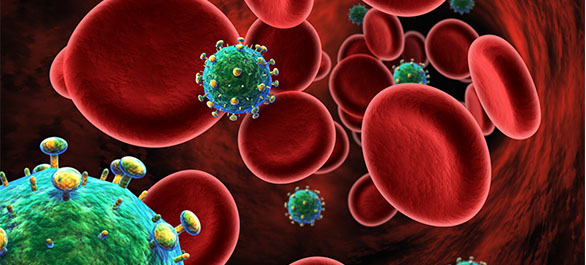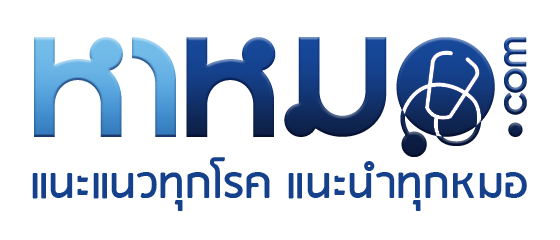
การจัดการภาวะแทรกซ้อนยาต้านรีโทรไวรัส ตอน 18
- โดย ภก.วิชญ์ภัทร ธรานนท์
- 10 ธันวาคม 2561
- Tweet

Stevens-Johnsons syndrome (SJS) และ Toxic epidermal necrosis (TEN) เป็นอาการไม่พึงประสงค์ทางผิวหนังที่เกิดขึ้นเร็ว มีความรุนแรงและเป็นภาวะฉุกเฉินที่ควรได้รับการวินิจฉัยและรักษาอย่างเร่งด่วน อาการเกิดได้ตั้งแต่ 2 – 3 วันแรกไปจนถึง 2 – 3 สัปดาห์หลังจากเริ่มยา จะพบลักษณะผื่นร่วมกับการมีแผลที่เยื่อบุต่างๆ เช่น ช่องปาก ตา และอวัยวะเพศ อาจจะมีตุ่มน้ำใสขนาดเล็กหรือใหญ่เกิดขึ้นอย่างรวดเร็ว อาจรุนแรงจนเกิดการลอกของหนังกำพร้าและมีการตายบางส่วน บางราอาจมีไข้ ชีพจรเต้นเร็ว ปวดกล้ามเนื้อและข้อ ภาวะแทรกซ้อนที่พบบ่อย คือ การขาดน้ำ การติดเชื้อแบคทีเรียหรือเชื้อราแทรกซ้อน หรือการทำงานของอวัยวะล้มเหลว การเกิด TEN จะมีพื้นที่ที่เป็นมากกว่าร้อยละ 30 ของผิวหนัง มีความรุนแรงมากกว่าและมีอัตาราการเสียชีวิตสูงกว่า SJS
สาเหตุ
ยากลุ่มเอ็นอาร์ทีไอ (NRTIs) มักไม่ค่อยทำให้เกิดผื่น ส่วนยากลุ่มเอ็นเอ็นอาร์ทีไอ (NNRTIs) ทุกชนิดสามารถทำให้เกิดผื่นได้ โดยพบในยาเนาวิราปีน (nevirapine; NVP) ร้อยละ 14.5 รองลงมา คือ เอฟฟาไวเร็นซ์ (efavirenz; EFV) โดยสามารถเกิดผื่นตั้งแต่ 2 – 3 วันแรก หรือนานหลายสัปดาห์หลังเริ่มยา ผื่นมักมีลักษณะเป็น diffuse maculopapular อาจเป็นเฉพาะที่หรือทั้งตัว บางรายมีอาการคันร่วมด้วย หากรุนแรงอาจมีผื่นร่วมกับไข้ มีเยื่อบุตาอักเสบหรือปากอักเสบร่วมด้วย ถ้าผื่นเป็นจาก NVP อาจมีภาวะตับอักเสบร่วมด้วยได้
การศึกษาของศศิโสภิณ เกียรติบูรณกุล และคณะพบว่า การเกิดผื่นจาก NVP มีปัจจัยเสี่ยงทางคลินิก คือ ประวัติแพ้ยาอื่นมาก่อน น้ำหนักตัว จำนวน CD-4 และประวัติเคยมีความเจ็บป่วยระยะเอดส์ และปัจจัยเสี่ยงทางพันธุกรรมที่สัมพันธ์กับการเกิดผื่นจาก NVP ในผู้ป่วยติดเชื้อเอชไอวีชาวไทย คือ single nucleoside polymorphism ใน CCHCR1 (rs1265112 และ rs746647) บนโครโมโซม 6p21.3 และ HLA-B*3503 มีความสัมพันธ์กับการเกิดผื่นจากยา nevirapine สำหรับยากลุ่ม PIs ที่ทำให้เกิดผื่นได้ แต่ไม่บ่อยเมื่อเทียบกับยากลุ่มเอ็นเอ็นอาร์ทีไอ (NNRTIs) โดยยาที่ทำให้เกิดผื่น คือ อะทาซานาเวียร์ (atazanavir) และดาลุนาเวียร์ (darunavir) ส่วนยากลุ่ม INSTIs ที่รายงานการเกิดผื่นได้ แต่ไม่บ่อย คือ ราลทิกราเวียร์ (raltegravir) และ เอวิทิกราเวียร์ (elvitegravir) ซึ่งผสมอยู่กับยาอื่นๆ คือ โคบิซิสสแตท /ทีโนโฟเวียร์/เอมตริไซตาบีน (cobicistat/tenofovir disoproxil fumarate/emtricitabine) ส่วนยามาลาวีรอค (maraviroc) ในกลุ่ม CCR5 antagonist ก็มีรายงานการเกิดผื่นเช่นกัน
การป้องกัน
การเริ่มยาเนวิราปีนด้วยขนาดยาครึ่งหนึ่ง คือ 200มิลลิกรัม/วัน เป็นเวลา 14 วันแรก ถ้าไม่มีผื่นเกิดขึ้นหลังจากนั้นเพิ่มขนาดยาเป็น 200 มิลลิกรัม วันละ 2 ครั้ง เรียกวิธีการนี้ว่า dose escalation หรือ lead-in การให้ยาต้านฮีสตามีน เช่น เซทเทอริซีน (cetirizine) หรือยากลุ่มสเตียรอยด์ร่วมไปด้วยตั้งแต่แรก ไม่ช่วยป้องกันการเกิดผื่นจากเนาวิราปีน ตรงกันข้ามอาจเพิ่มความรุนแรงของผื่นได้ ยังไม่มีแนวทางปฏิบัติหรือคำแนะนำสำหรับการป้องกันการเกิดผื่นจากยาต้านรีโทรไวรัสชนิดอื่น
หากผู้ป่วยได้รับยาต้านรีโทรไวรัสอยู่ แล้วเกิดอาการไม่พึงประสงค์ดังกล่าว ข้างต้น หรือมีความผิดปกติอื่นๆ ควรรีบไปพบแพทย์โดยทันที เพื่อให้ได้รับการรักษาอย่างรวดเร็ว
การรักษา
ผู้ที่มีผื่นเล็กน้อยจนถึงปานกลางที่ไม่มีไข้ ไม่มีตับอักเสบและไม่มีเยื่อบุตาหรือปาก อักเสบร่วมด้วย สามารถให้ยาต้านรีโทรไวรัสต่อไปได้และให้ยาต้านฮีสตามีนร่วกับสังเกตอาการอย่างใกล้ชิด กรณีที่มีผื่นช่วง lead-in nevirapine และผื่นไม่มีความรุนแรง ให้คงระยะ lead-in ต่อไปก่อนจนกว่าผื่นจะดีขึ้นจึงพิจารณาเพิ่มขนาดยา nevirapine เป็นขนาดปกติ ทั้งนี้ระยะเวลา lead-in นี้สามารถให้ได้ไม่เกิน 28 วัน กรณีมีผื่นนูนแดงคล้ายลมพิษสามารถให้การรักษาเหมือนผื่นแพ้ที่ไม่รุนแรง แต่ถ้ามีการหยุดยาไปแล้ว ไม่แนะนำให้เริ่มยาที่เป็นสาเหตุนั้นอีก ในผู้ที่มีผื่นรุนแรงร่วมกับอาการอื่นๆอย่างน้อย 1 อาการ คือ ไข้ เยื่อบุตาหรือปากอักเสบ ผื่นมีลักษณะเป็นตุ่มน้ำ บวม ปวดข้อหรือมีตับอักเสบ ให้หยุดยาต้านรีโทรไวรัสที่คาดว่าเป็นสาเหตุ และไม่ควรเริ่มยาที่น่าจะเป็นสาเหตุนั้นอีก
บรรณานุกรม:
- Department of disease control, Thailand National Guidelines on HIV/AIDS Treatment and Prevention 2017. availavle from http://www.thaiaidssociety.org/images/PDF/ hiv_thai_guideline _2560.pdf.
- Cohen DE, Mayer KH. Primary care issues for HIV-infected patients. Infect Dis Clin N Am 21 (2007): 49–70.
- วีรวัฒน์ มโนสุทธิ. Current management of complication of antiretroviral therapy. ใน: ชาญกิจ พุฒิเลอพงศ์, ณัฏฐดา อารีเปี่ยม, แสง อุษยาพร, บรรณาธิการ. Pharmacotherapy in infectious disease VII. กรุงเทพมหานคร. สำนักพิมพ์แห่งจุฬาลงกรณ์มหาวิทยาลัย. 2558, หน้า 198-201.
- Group TISS. Initiation of Antiretroviral Therapy in Early Asymptomatic HIV Infection. New England Journal of Medicine. 2015;373(9):795-807.
- Group TTAS. A Trial of Early Antiretrovirals and Isoniazid Preventive Therapy in Africa. New England Journal of Medicine. 2015;373(9):808-22.
- Ayoko R. Bossou SC, Karen K. O’Brien, Catherine A. Opere, Christopher J. Destache. Preventive HIV Vaccines: Progress and Challenges. US Pharmacist. 2015 OCTOBER 16, 2015:46-50.
- รัชนู เจริญพักตร์ และ ชาญกิจ พุฒิเลอพงศ์. Current update on HIV/AIDs treatment guideline in 2017. ใน: ชาญกิจ พุฒิเลอพงศ์, โชติรัตน์ นครานุรักษ์, และ แสง อุษยาพร, บรรณาธิการ. Pharmacotherapy in infectious disease IX. กรุงเทพมหานคร. สำนักพิมพ์แห่งจุฬาลงกรณ์มหาวิทยาลัย. 2560, หน้า 342-364.
- Wada N JL, Cohen M, French A, Phair J, Munoz A. Cause-specific life expectancies after 35 years of age for human immunodeficiency syndrome-infected and human immunodeficiency syndrome-negative individuals followed simultaneously in long-term cohort studies, 1984-2008. Am J Epidermol. 2013; 177: 116-125.
- Department of Health and Human Services. Guidelines for the Use of Antiretroviral Agents in Adults and Adolescents Living with HIV Available from: https://aidsinfo.nih.gov/guidelines.
- O'Brien ME, Clark RA, Besch CL, Myers L, Kissinger P. Patterns and correlates of discontinuation of the initial HAART regimen in an urban outpatient cohort. Journal of acquired immune deficiency syndromes (1999). 2003;34(4):407-14.
- Kiertiburanakul S, Luengroongroj P, Sungkanuparph S. Clinical characteristics of HIV-infected patients who survive after the diagnosis of HIV infection for more than 10 years in a resource-limited setting. Journal of the International Association of Physicians in AIDS Care (Chicago, Ill : 2002). 2012;11(6):361-5.
- Wiboonchutikul S, Sungkanuparph S, Kiertiburanakul S, Chailurkit LO, Charoenyingwattana A, Wangsomboonsiri W, et al. Vitamin D insufficiency and deficiency among HIV-1-infected patients in a tropical setting. Journal of the International Association of Physicians in AIDS Care (Chicago, Ill : 2002). 2012;11(5):305-10.
- Wilde JT, Lee CA, Collins P, Giangrande PL, Winter M, Shiach CR. Increased bleeding associated with protease inhibitor therapy in HIV-positive patients with bleeding disorders. British journal of haematology. 1999;107(3):556-9.
- European AIDS Clinical Society. EACS Guidelines version 8.1-October 2016. Available from http://www.eacsociety.org/files/guidelines_8.1-english.pdf.
- ศศิโสภิณ เกียรติบูรณกุล. การดูแลรักษาผู้ติดเชื้อเอชไอวีแบบผู้ป่วยนอก.กรุงเทพฯ : ภาควิชาอายุรศาสตร์ คณะแพทยศาตร์โรงพยาบาลรามาธิบดี มหาวิทยาลัยมหิดล, 2557
- Morse CG, Mican JM, Jones EC, Joe GO, Rick ME, Formentini E, et al. The incidence and natural history of osteonecrosis in HIV-infected adults. Clinical infectious diseases : an official publication of the Infectious Diseases Society of America. 2007;44(5):739-48.
- Woodward CL, Hall AM, Williams IG, Madge S, Copas A, Nair D, et al. Tenofovir-associated renal and bone toxicity. HIV medicine. 2009;10(8):482-7.
- Wang H, Lu X, Yang X, Xu N. The efficacy and safety of tenofovir alafenamide versus tenofovir disoproxil fumarate in antiretroviral regimens for HIV-1 therapy: Meta-analysis. Medicine. 2016;95(41):e5146.
- Redig AJ, Berliner N. Pathogenesis and clinical implications of HIV-related anemia in 2013. Hematology American Society of Hematology Education Program. 2013;2013:377-81.
- Assefa M, Abegaz WE, Shewamare A, Medhin G, Belay M. Prevalence and correlates of anemia among HIV infected patients on highly active anti-retroviral therapy at Zewditu Memorial Hospital, Ethiopia. BMC Hematology. 2015;15:6.
- de Gaetano Donati K, Cauda R, Iacoviello L. HIV Infection, Antiretroviral Therapy and Cardiovascular Risk. Mediterranean Journal of Hematology and Infectious Diseases. 2010;2(3):e2010034.
- Group TDS. Class of Antiretroviral Drugs and the Risk of Myocardial Infarction. New England Journal of Medicine. 2007;356(17):1723-35.
- Tsiodras S, Mantzoros C, Hammer S, Samore M. Effects of protease inhibitors on hyperglycemia, hyperlipidemia, and lipodystrophy: a 5-year cohort study. Archives of internal medicine. 2000;160(13):2050-6.
- วราภณ วงศ์ถาวราวัฒน์. Diagnosis and classification of Diabetes Mellitus. ใน: ธิติ สนับบุญ, บรรณาธิการ. แนวทางเวชปฏิบัติทางต่อมไร้ท่อ. กรุงเทพมหานคร.โรงพิมพ์แห่งจุฬาลงกรณ์มหาวิทยาลัย. 2560, หน้า 1-9.
- ชาญกิจ พุฒิเลอพงศ์. Clinical management for dyslipidemia in HIV-infected patients. ใน: ชาญกิจ พุฒิเลอพงศ์ และ ณัฏฐดา อารีเปี่ยม, บรรณาธิการ. Pharmacotherapy in infectious disease VI. กรุงเทพมหานคร. คอนเซ็พท์พริ้นท์. 2557, หน้า 198-201.
- Dube MP, Stein JH, Aberg JA, Fichtenbaum CJ, Gerber JG, Tashima KT, et al. Guidelines for the evaluation and management of dyslipidemia in human immunodeficiency virus (HIV)-infected adults receiving antiretroviral therapy: recommendations of the HIV Medical Association of the Infectious Disease Society of America and the Adult AIDS Clinical Trials Group. Clinical infectious diseases : an official publication of the Infectious Diseases Society of America. 2003;37(5):613-27.
- Hoffman RM, Currier JS. Management of antiretroviral treatment-related complications. Infectious disease clinics of North America. 2007;21(1):103-32, ix.
- Husain NEOS, Ahmed MH. Managing dyslipidemia in HIV/AIDS patients: challenges and solutions. HIV/AIDS (Auckland, NZ). 2015;7:1-10.
- Kiertiburanakul S, Sungkanuparph S, Charoenyingwattana A, Mahasirimongkol S, Sura T, Chantratita W. Risk factors for nevirapine-associated rash among HIV-infected patients with low CD4 cell counts in resource-limited settings. Current HIV research. 2008;6(1):65-9.
- Murphy RL. Defining the toxicity profile of nevirapine and other antiretroviral drugs. Journal of acquired immune deficiency syndromes (1999). 2003;34 Suppl 1:S15-20.
- Department of Health and Human Services. HIV and Lactic Acidosis. Available from: https://aidsinfo.nih.gov/understanding-hiv-aids/fact-sheets/22/68/hiv-and-lactic-acidosis.
- Grinspoon S, Carr A. Cardiovascular Risk and Body-Fat Abnormalities in HIV-Infected Adults. New England Journal of Medicine. 2005;352(1):48-62.
- Simpson D, Estanislao L, Evans S , McArthur J, Marcusd K, Truffa M et,al. HIV-associated neuromuscular weakness syndrome. AIDS (London, England). 2004;18(10):1403-12.
- Hall AM, Hendry BM, Nitsch D, Connolly JO. Tenofovir-associated kidney toxicity in HIV-infected patients: a review of the evidence. American journal of kidney diseases : the official journal of the National Kidney Foundation. 2011;57(5):773-80.
- Chaisiri K, Bowonwatanuwong C, Kasettratat N, Kiertiburanakul S. Incidence and risk factors for tenofovir-associated renal function decline among Thai HIV-infected patients with low-body weight. Current HIV research. 2010;8(7):504-9.
- Schwarzwald H, Gillespie S. Management of Antiretroviral-Associated Complications. Available from: https://bipai.org/sites/bipai/files/5-Mgt-assoc-complications.pdf
- ศศิโสภิณ เกียรติบูรณกุล. Practical management of complication-associated with ARVใน: นารัต เกษตรทัต, ชาญกิจ พุฒิเลอพงศ์ และ ณัฏฐดา อารีเปี่ยม, บรรณาธิการ. Pharmacotherapy in infectious disease VI. กรุงเทพมหานคร. คอนเซ็พท์พริ้นท์. 2554, หน้า 317-346.


